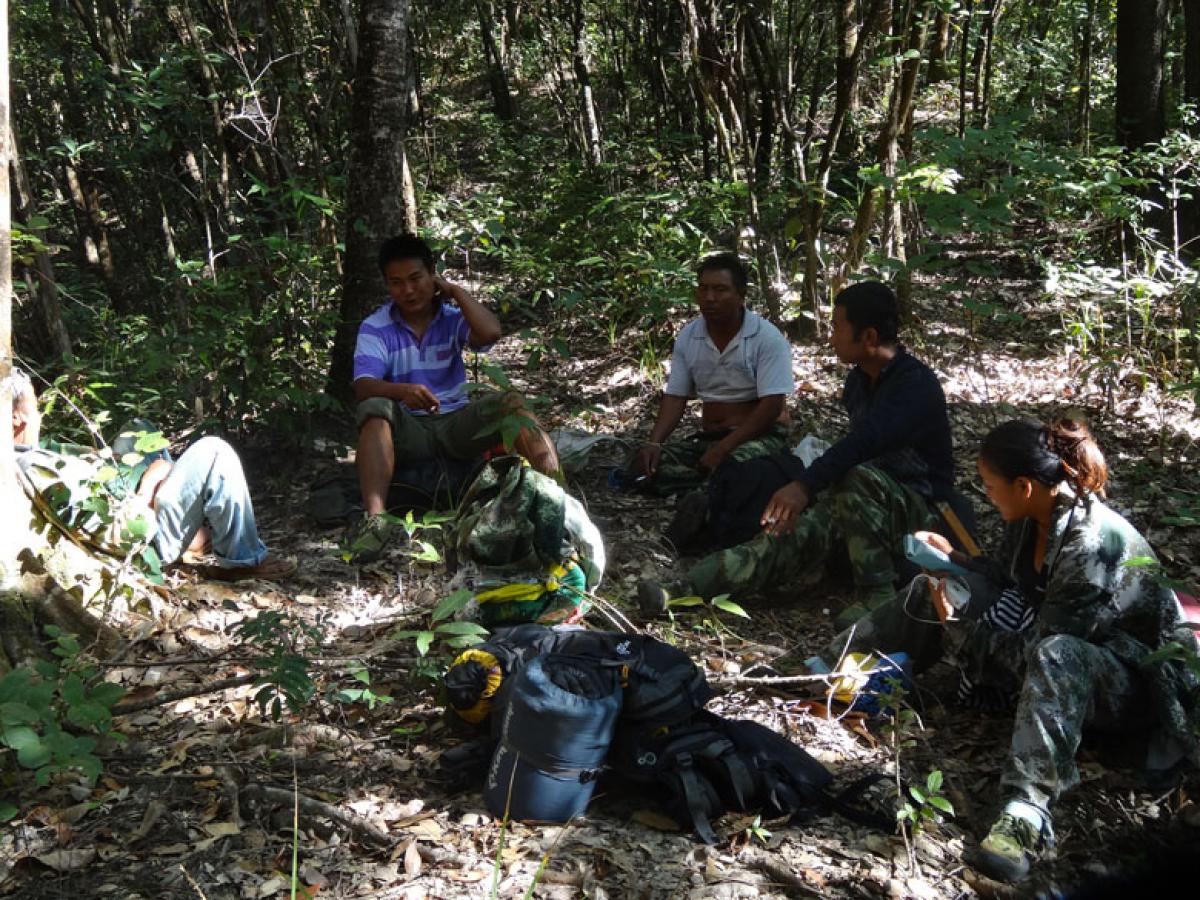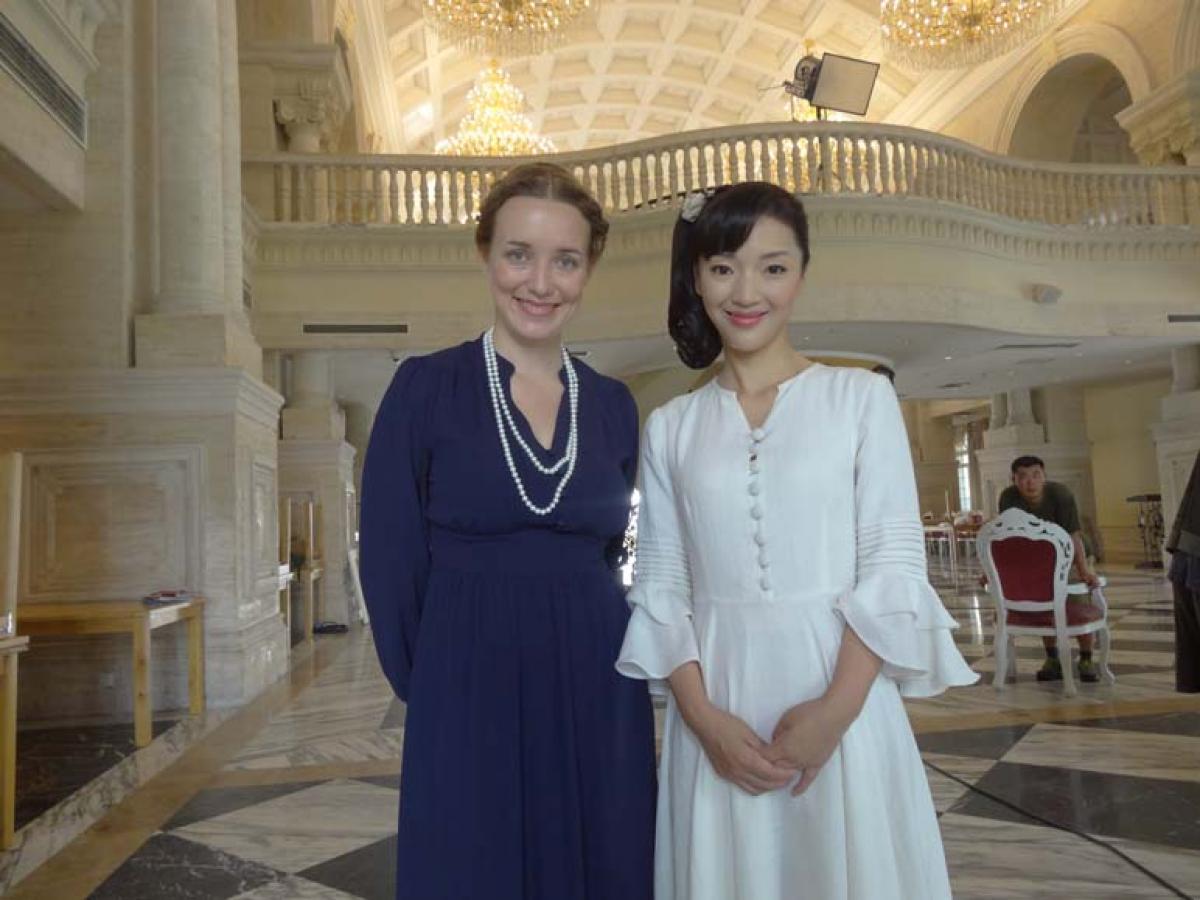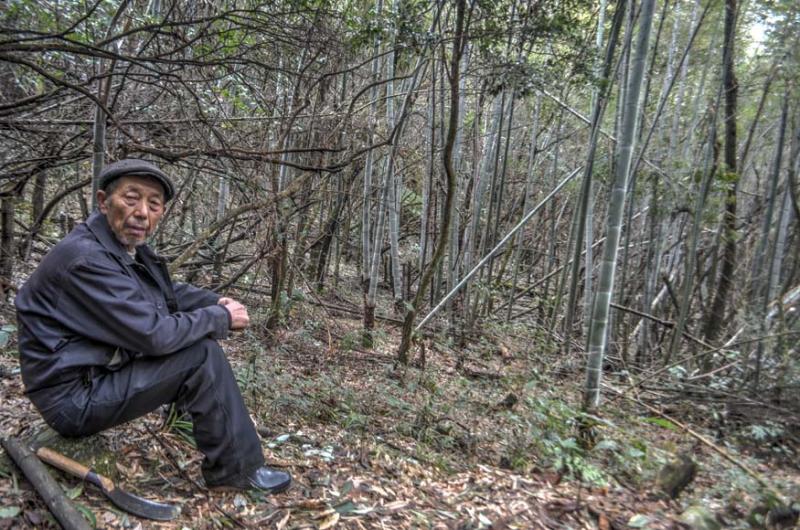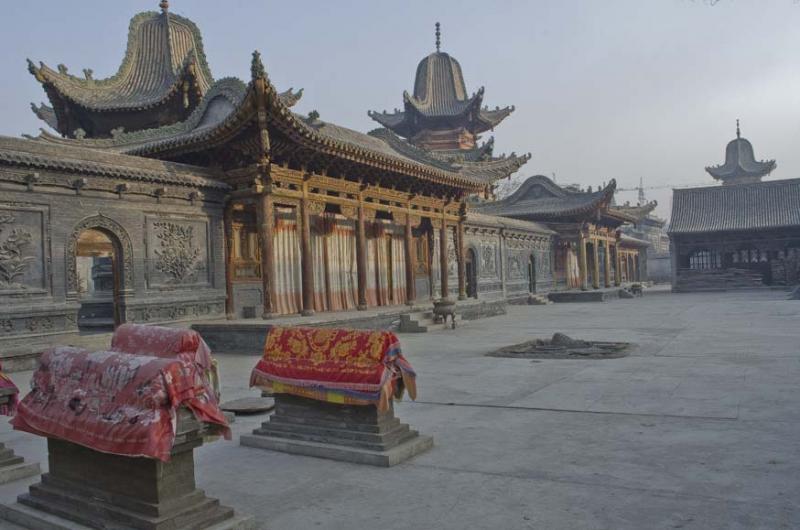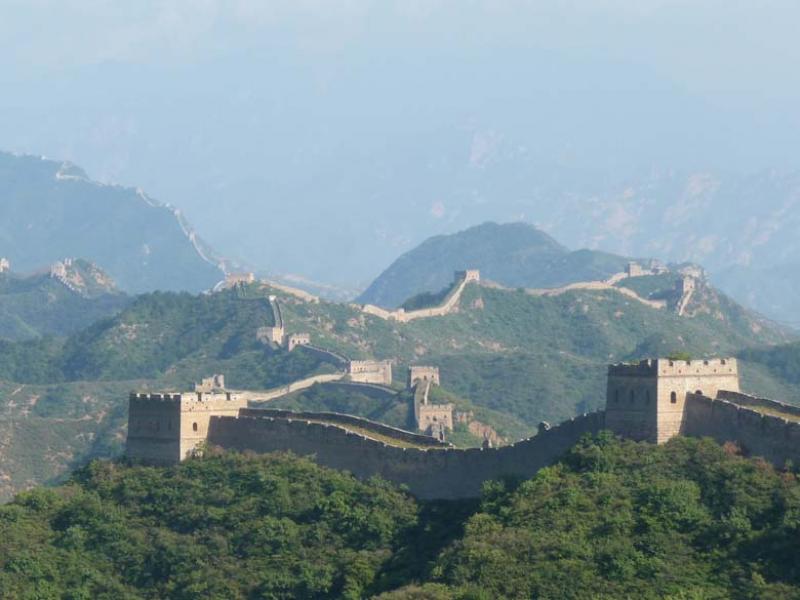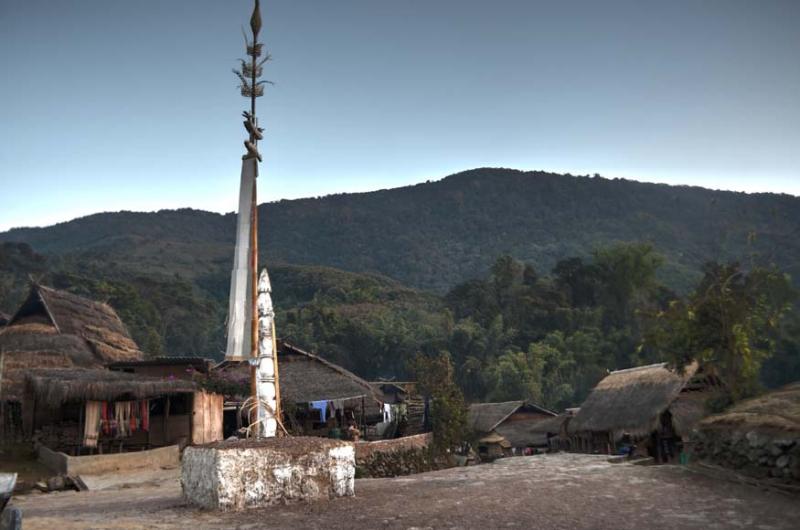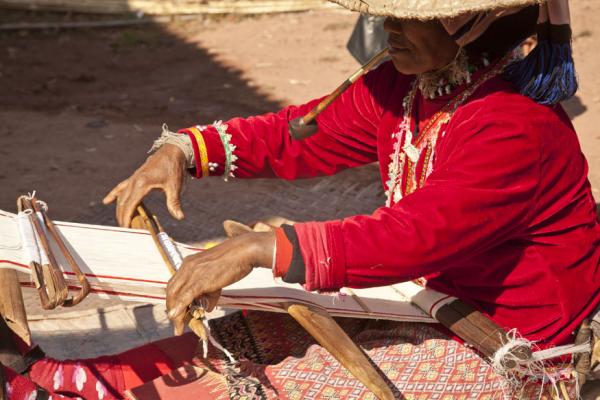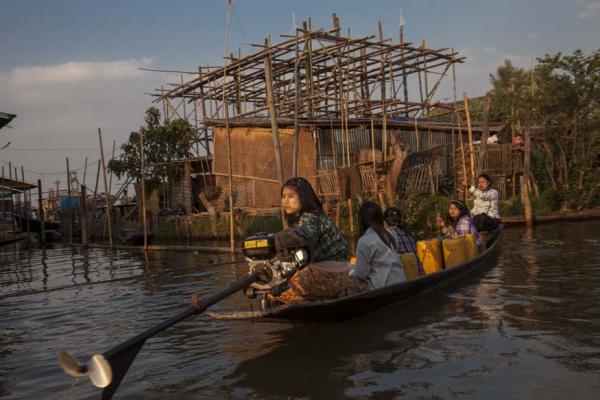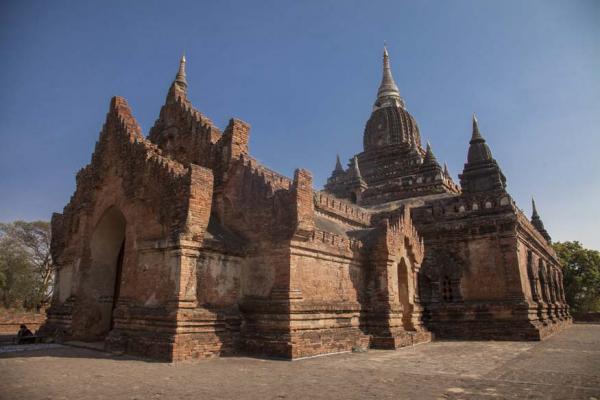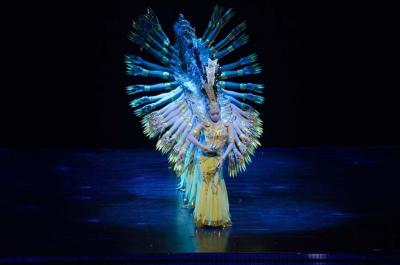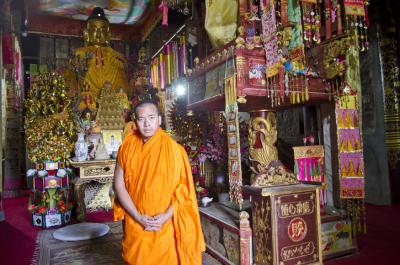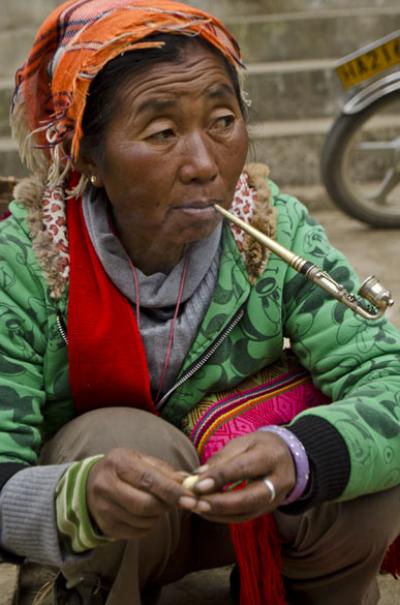China (103)
Aenean eu leo quam. Pellentesque ornare sem lacinia quam venenatis vestibulum. Cras justo odio, dapibus ac facilisis in, egestas eget quam. Aenean lacinia bibendum nulla sed consectetur.
Muslim Shrines in Linxia, Gansu
I read somewhere that some of the best trips happen by accident. Linxia was like that for me, and I had discovered it while on a trip with my university professor, Dr. Kun Shi, who is a wild cat researcher here in China. He wanted me to see more of China, and Gansu, China was definitely not on my list of vacation destinations, at least, not for January. Linxia simply happened to be on the way to another destination I was visiting after I had finished travelling and working with him. Southern Gansu became very interesting to me because of Linxia. It's in between the capital of Gansu and the currently largest Tibetan Buddhist Monestary in China. I had known that towards the border of Qinghai there was one of the largest Tibetan Buddhist monestaries in China, but I didn’t know that 2 hours away from that monestary was one of the more historical religious places to the Hui Chinese, who are traditionally Muslim, and is particularly Sufi Muslim.
I went to the provincial museum for Gansu the previous week, and although they talk about the silk road, Buddhist culture, dinosaurs, and Neolithic culture there weren't any artifacts or exhibits dedicated to Muslims in Gansu. There are over 10 distinct ethnic Muslim groups in this part of China. The Hui Chinese are an ethnic minority in China, and they have a population of nearly 10 million people dispersed throughout China. They have been recognized as being Hui because they are descendants of foreign Muslims from the Middle east, although they speak Chinese and not Turkic languages ( like the Uyghurs). Linxia has many Hui Chinese, but they perhaps aren't as recognized because the adacent region Ningxia Hui Autonomous region broke away from Gansu province and became it's own region dedicated to the Hui Chinese, which are one of 56 nationally recognized nationalities.
Linxia city is the center for the Qadiriyyah and Kufiyya Sufi orders, and within the city there are over 100 mosques, which in the past were educational centers for saints bringing doctrines from the Middle East. On the bus towards Linxia, I saw many more mosques that are part of the district, which numbers over 1000 mosques. This area is an object for pilgrimage by foreign Muslims, as well as urban Hui in China who wish to explore a historic Sufi area, which holds institutions from the late 17th century, as well as several sacred tombs. These places pivitol to the Sufi reform movement of the 16th century are dedicated to Sufi masters, called menhuan which can be translated as “saintly lineages” or Chinese Sufi sects. This wave of Sufi culture revitalized an already growing Muslim population in China, which began in the Tang dynasty near 619 AD.
I got off the bus at around 11am after a relatively smooth ride from Lanzhou, with no wait time because a bus leaves every 30 minutes. At the bus station, I feel slightly awkward simply walking away from the bus, as if there’s more to be said or done there. Nonetheless, I depart, surrounded by strangers carrying their knap sacks and holding babies. At the entrance of the station and above the city on the mountain I can see a large Taoist temple with some kind of vertical pagoda. I’m tempted to go there immediately to see the view of the city, but instead start walking down the street. I reach a Muslim restaurant, which like most of these restaurants, serve beef noodles for lunch. Muslim noodle restaurants are characteristic in most cities in Gansu, with mostly young men wearing their traditional white muslim hats working inside.
I hop in a taxi and the driver asks me where I’m going.
“qingzhen si (清真词)“ I reply, which is Chinese for Islamic temple. The direct meaning on qingzhen is pure and true Islam. They use the words qingzhen on their restaurants and stores as well. It’s kind of like the Chinese version of Halal for the Hui, and they use this word as a reinforcement of their religious habits, diet, and customs. Whether qing zhen si should be regarded as a potent symbol, a handy catch prase, evidence of Hui identity, or a manifestation of a power that really exists, I cannot say.
In Chinese, the driver asks which one, and I tell him I want to see the oldest and most favorite qingzhen si. I also ask him to show me a reasonable hotel for the night. I get driven around on a short tour in front of the yu baba shrine, and then dropped off in a neighborhood with a few hotels. He smokes in the cab, which is typical of most drivers, although he’s so friendly that it doesn’t bother me.
Unfortunately, I’m in the wrong place because only certain hotels in China are permitted to cater to foreigners, and the one he's dropped me off at doesn't cater to foreigners. A woman with her baby notices me looking lost and perplexed in front of the hotel and begins to ask me where I’m going etc. I tell her I’m looking for a hotel. Many Chinese muslim women have a way of dressing with sparkling accessories, and are usually adorned with rhinestones, sequence, flowers, or necklaces worn on their heads over their traditional headdress. I noticed on her she has tight black pants with a silver metal tiger embedded. Her hat is dull peach color adorned with red flowers and sequence. She takes me over to her mother who has recently killed some chickens and has set them out on a table and is picking off the rest of the remaining few feathers. Then she gets ahold of her brother on the phone who speaks fluent English. Across the street there’s a fur vendor who has animal fur vests hanging on the wall. Nearby there are several carpet makers. I can’t find a hotel yet, but this lady is being so nice she even offered me a place to stay at her house after another hotel turned me down for being a foreigner. Although I'm intrigued by her and her family, I decide to find my own place to stay and wind up staying at Hehai Mansion, which does cater to foreigners and is slightly upscale with rooms for 200 yuan a night. I don't expect to find a cheaper room, and in hindsight, staying with that funny lady would have been more enjoyable. Next time, I would probably take the offer.
I finally get to exploring the nearby mosques and shrines. At the Yu Baba Shrine one of the caretakers is sweeping the stone walkway. The gongbei complexes are shrines for the Sufi master. They include a grave topped with a dome. I found an interesting article online “Muslim Tombs and Ethnic Folklore: Charters for Hui Identity” which was interesting and gave an in depth perspective on the Muslim culture, especially on the tomb culture, which visiting this place alone could not provide for me. There are many significant tombs in Linxia which the Hui people worship, and make pilgrimage to. They worship tombs, and also pray in graveyards, which is not typical of Muslim mosque culture, nor Chinese. The Qadariyya in China was established in China by a twenty-ninth generation descendant of Muhammad, Khoja Abd Alla, and he would come to Linxia periodically to preach. This path became firmly rooted in China by one of his disciples, Qi Jingyi, who is buried at Da gongbei. The most influential Kufiyya menhua, the Huasi branch is surrounding the tomb of Ma Laichi, who studied extensively in Yemen at Naqshbandi hostels. No where in the shrines do I see old framed photographs as rememberance of these saints, but what I did find was several stone carved dioramas with tiny people etched into the stone. They are perched in classical Chinese style on mountains, or fishing in lakes, often reclining and relaxed like a Tao or Zen art.
These Chinese Muslim places are adorned with wood and stone carvings, large pieces of rock, and other tao elements as decoration. They create tablets like the Taoist, and add Islamic writing on the top. The building are decorated and painted like a traditional Chinese temple or park, with teapots, lotuses, grapes, and animals create ornamentation. Arabic script and symbols are found on doorways in place of Chinese characters. There are large prayer halls with chinese rugs with chinese scripts, and large stones on their prayer altars. They make their own incense which is sometimes thicker than my fingers. I look inside of their prayer books and they are Arabic and Chinese. At some of the mosques they are reciting and chanting together, and there is hardly a Chinese accent. The Hui Chinese also incorporate confucism, Daoism, and Buddhist folk rituals into their practices and lifestyles. I go from taxi to taxi asking to see their most favorite and oldest qingzhen si's. I'm taken down backroads and through alleys to see various gongbei.
Inle Lake Trekking and Boating on Buddha's Donation Holiday
At a small restaurant after a long day on the lake. The walls are made of rattan and the lamps are handmade paper. Most of the chairs and tables are wood. It's touching that they build their houses and make so many practical things.
The day on the lake felt like a shopping excursion. First I bought 3 ilk longies. Then we went to the market and I photographed the traditional people. We went to a silversmith who was selling $330 star sapphire earrings.Then we went to a cigar shop, later long necked Thai women, weavers in an umbrella shop. We made it to an impressive pagoda. It was totally dilapidated in parts. Other parts were fully restored. Part of the restoration was still in progress and they were using concrete to do some of the styling features. I had a great day simply taking photos. We ride in a long boat. Most of the other boats were 4 or 5 people, but I had one all to myself. It kind of bobbed up and down in the water. The lake was angelic and blue in the morning sky and the water had the same hue. I'm having a romantic time by yourself. The sunset over the lake was equally as incredible. I went back and had fried rice and vegetable with a strawberry lassi and tea for dinner. I fell asleep in my quiet hotel and woke up around 5am with the monks chanting next door. I booked a trek yesterday that should be a nice Valentines Day treat. We hiked all day long, beginning with a boat ride. At the docks many women were coming home from the monastery with their offering baskets. It's a donation festival to the Buddha. I took many photos of women carrying their offering plates. The monastary was sweet, and I gave offering and respect to the Buddha. I had tea with one female monk and 3 Pa-O women who were eating sticky rice with caukry sugar. We continued on our trek uphill for another 2 hours and arrived at another Pa-O families house. I I took photos of the people and interesting plants. Then we arrived to the tour guides aunts house. We watched the sunset together and then went to the small monastery in the village for the festival. They started 7 fires around the monastery, one for each day of the week. They lit candles around the monastary. The girls were reciting in the temple.
The next morning we ate a big breakfast and hiked for 5 hours to a village where we had tea with one woman who was given a $10 bill by some travelers. She was really happy and had never had American money before. We saw many villagers, and then reached a cave temple where one monk had stayed there for one year and became an arhat. What a powerful place to do meditation. It was so dark in the cave. I would have love to stay and do retreat there. I think I'll try to find more cave temples for meditation retreat.
Carefree in Bagan, Myanmar
I arrived in Nyuang Nu airport greeted by the $15 archeological fee. I instantly feel like this place is a dead tourist trap. I wished I had stayed in Yangon or Golden Rock and am filled disappointment, which is not the way to feel when you arrive to see Bagan, don't be fooled by this fee. I tell the driver of the taxi I want a good hotel, abd he takes me to a lower end hotel in a dusty part of town. I was thinking this would be a good hotel so I check in. I later come to find out there are more romantic and beautiful areas of Nyuang Nu, Bagan, or even Old Bagan to stay with no traffic noise and less dust. After checking in, I walked around Nyuang Nu for a few hours, had a nice vegetarian dinner. I went into a really dusty jewelry store with no good finds. I got a traditional Myanmar massage, which ended up being some untrained person simply kneeding my legs with her bony hands. Nevertheless, after climbing around on Golden Rock I was completely exhausted, and my legs were so sore I could barely walk.
The next day, I woke up and had breakfast. I started my adventure on electric bicycle around Bagan, and circled the main loop. I was having an absolutely boring time due to exhaustion from the previous trek to Golden Rock, and I had just finished a 11 day detox cleanse where I basically hadn't eaten any solid foods for 7 days. So my energy wasn't high. I'm so tired I just want to regenerate, but I don't want to miss the time here either. I want to go deeply into Bagan because it's so well preserved, but the magic also seems to be sold to tourists and I'm not impressed. I feel like waiting for sunset to get photos, or needing a tour guide to take me to the best places. My dream was to explore and get lost, wandering from temple to temple. I felt overwhelmed and not knowing where to go. I had to just go slow. I had time if I want it. The e-bike was totally uncomfortable. I need rest and meditation but I'm drinking a latte. After riding around for several hours I became impressed. I pressed some gold leaf on the hearts of the buddha's in the Ananda temple. I rode around marveling at the brick temple construction. I walked through halls and halls of Buddhist temple art. I squeezed through cooridors and felt the nail polish of fingernails bigger than my head. I asked the locals which temples were the most beautiful and followed the map. The insides of the temples were even more beautiful than I had imagined.
I headed to MahaBodhi temple, and then to a small village and some of the more off the beaten path temples. It finally happened that I got lost wandering through the temples. I rode the e-bike through sand trails, fell over a few times, and discovered abandoned temples. Finally, I was lost in the dry zone of Myanmar exploring the temples of Bagan . I was completely childish driving on roads recklessly and falling over. I went to one temple for sunset. I stayed until no one was left and enjoyed the solitude. I headed back alone in the dark and passed a lake. The dusty sandy roads were mostly all mine, amist the creosote, acacias and cacti it's free alone... I went to a village and bought a few of the gongs that they're selling. I was also attracted to the star sapphires and star rubies that they have for sale, although I'm afraid they're all fakes.
Shwedagon pagoda, Yangon, Myanmar
I woke up at 5am to catch the bus to Yangon. I only have a few hours in Yangon before my flight, unfortunately, and I want to see the Shwedagon pagoda.Yangon deserved more of my time, as there are 2 other large pagoda/temples in the area. At first, I was turned off by the idea of a big city, because I live in Beijing, so I purposefully didn't want to stay in Yangon very long. It ended up being a big mistake. Yangon deserves at least a full day, if not 2 or 3 days. I hire a taxi for 6 hours to take me there and then to the airport. I got to the pagoda and was approached by a tour guide, whom I refused at first thinking I could find my way around myself. I was totally wrong, and then grateful that the guide had followed me around a little bit and did the tour anyway. He spoke very good English and knew the entire area. In the pagoda, some of the rooms were absolutely stunning. I was more than impressed by the beauty, it was incredible, covered with mirrors, gold, and gems. There is a certain majesty to the golden spires and white pagoda construction which make it completely enchanting. The temple painted gold glows with an incandescence of green, pink and blue, the dome at the top is actually covered with gold plates, and the umbrella at the top is covered in gems. The temple grounds are crowded with Burmese tourists. It's Sunday, which I later found out from my guide that I was born on Sunday shortly before the new moon. He helps me find the most famous and oldest Buddha's in the complex. There are incredible golden rooms with mirrors everywhere, inlaid with embossed red and colored woods and intricate mosaics.
